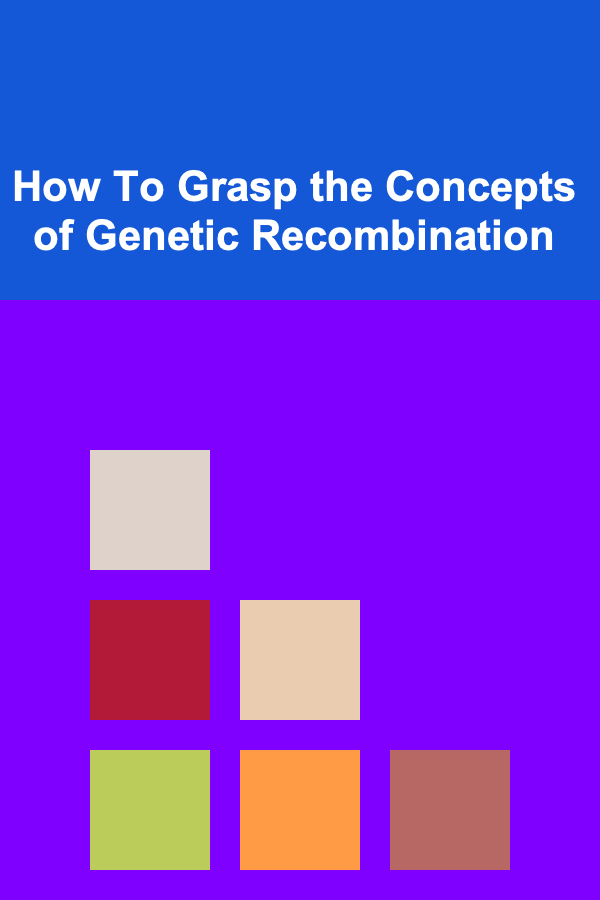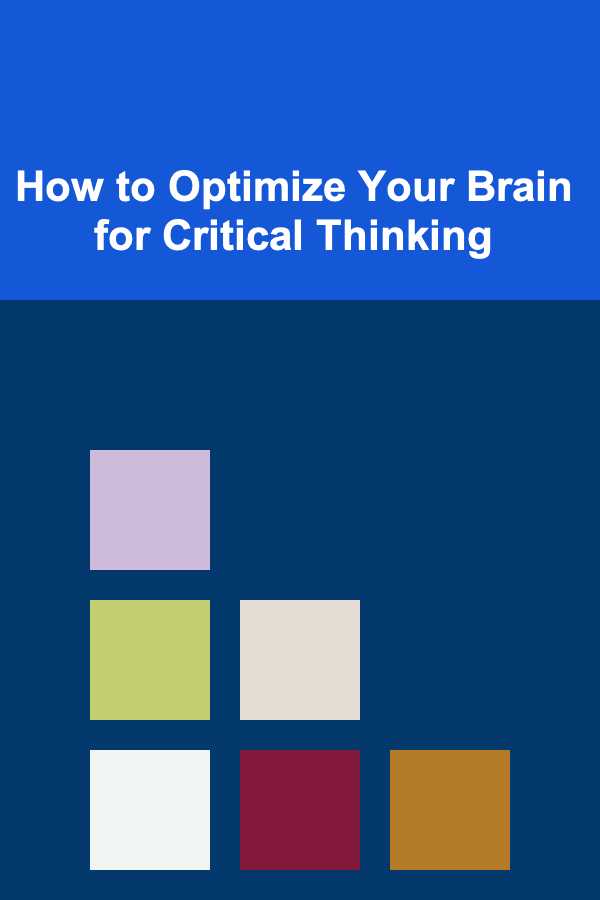
How to Navigate the Design Process: A Guide for Industrial Designers
ebook include PDF & Audio bundle (Micro Guide)
$12.99$6.99
Limited Time Offer! Order within the next:
Not available at this time

Industrial design is an intricate and dynamic field that blends creativity, functionality, and user-centric principles to create products that not only meet practical needs but also evoke emotional connections. As an industrial designer, understanding the design process is key to producing impactful and efficient designs. This process is neither linear nor rigid but is a fluid series of stages that involve research, ideation, prototyping, testing, and refinement.
In this article, we will explore the design process step by step, offering insights and best practices to help you navigate the journey from concept to finished product. By understanding the fundamental stages of industrial design, designers can ensure that their creations are not only aesthetically pleasing but also functional, sustainable, and user-centered.
Understanding the Problem and Defining Objectives
The first and most critical step in the design process is to fully understand the problem you're solving. As an industrial designer, your role is to bridge the gap between a need or challenge and a tangible solution. This means not only grasping the technical requirements but also the human factors, market trends, and contextual conditions that will shape the final product.
Key Steps:
- Client Briefing: Start by discussing the project requirements with the client or stakeholders. This is where you'll gather information about the product's intended function, target audience, and any specific design constraints such as size, materials, or manufacturing processes.
- Market Research: Conduct market research to understand the landscape, including competitor products, existing solutions, and emerging trends in the field. This will help you identify opportunities for innovation and differentiation.
- User Research: The most effective designs solve real problems for users. Conduct user interviews, surveys, and observations to understand user needs, preferences, and pain points. This will help you design a product that truly resonates with its intended audience.
- Defining Objectives: Based on the information gathered, define clear design objectives. These should outline the product's purpose, functional requirements, aesthetic considerations, and technical specifications.
This initial phase is about gathering insights and setting a solid foundation for the rest of the design process. A well-defined problem statement and clear objectives will guide your creative and technical decisions throughout the journey.
Concept Development and Ideation
Once you have a clear understanding of the problem and objectives, the next stage is concept development. This is where you begin generating ideas, exploring different design directions, and pushing the boundaries of creativity.
Key Steps:
- Brainstorming: Start by sketching out rough ideas and exploring various design directions. Use brainstorming techniques such as mind mapping, sketching, and idea boards to visualize different possibilities. Don't limit yourself---sometimes the most unconventional ideas lead to breakthrough designs.
- Design Constraints: Keep the design constraints (such as budget, size, materials, and functionality) in mind, but don't let them stifle creativity. Aim to balance innovation with feasibility.
- Concept Selection: After generating a wide range of ideas, narrow them down to a few promising concepts. Evaluate them based on factors such as usability, aesthetics, manufacturability, sustainability, and cost. Consider how well each concept addresses the user's needs and the client's objectives.
At this stage, you are focused on exploration rather than perfection. Don't be afraid to experiment with wild ideas, as this is the stage where new solutions are often born. After selecting a few strong concepts, it's time to take them further.
Prototyping and Iteration
Prototyping is an essential part of the industrial design process. It allows you to transform abstract concepts into tangible forms and test how they function in the real world. Prototypes help you refine ideas, test functionality, and communicate your vision to clients and stakeholders.
Key Steps:
- Low-Fidelity Prototypes: Start with basic prototypes that are inexpensive and quick to produce. These can be made from simple materials such as foam, cardboard, or 3D-printed parts. The goal is to visualize the design and evaluate its basic form and function.
- High-Fidelity Prototypes: Once you've validated your initial concepts, create more refined prototypes using materials and manufacturing techniques that are closer to the final product. This stage helps you evaluate the product's ergonomics, user interaction, and mechanical performance.
- Iteration and Feedback: The process of prototyping is iterative, meaning that you should continually test and refine your designs. Gather feedback from users, clients, and other stakeholders, and incorporate it into your prototypes. This feedback loop ensures that the design evolves in the right direction.
Prototypes serve as a critical tool for evaluating design decisions in a real-world context. By physically interacting with a prototype, you can identify issues that may not be apparent on paper, leading to more informed design choices.
Testing and Evaluation
Testing is an essential phase in the design process that helps validate the functionality, durability, and usability of your design. It's where you put your prototype through rigorous real-world conditions to ensure it meets the performance standards and user expectations.
Key Steps:
- Functional Testing: Test the product's functionality to ensure that it works as intended. Does it meet the requirements you set out in the beginning? Are there any technical issues or flaws that need to be addressed?
- Usability Testing: Test the product with real users to assess its ease of use, comfort, and intuitiveness. Collect qualitative and quantitative data to identify any usability issues or areas for improvement.
- Durability Testing: If applicable, test the product for its longevity and ability to withstand wear and tear. For example, if you're designing a consumer electronics product, check the battery life, screen durability, or water resistance.
- Compliance and Safety: Ensure that your design meets regulatory standards and safety requirements. This is especially important for products like medical devices, children's toys, or electrical appliances.
The testing phase is where potential design flaws and user experience issues come to light. While it may uncover problems that require revisions, this step is crucial for ensuring that the final product is safe, functional, and user-friendly.
Refinement and Finalization
Once you've gathered feedback from testing, the next phase is refinement. This is where you make final adjustments to your design to address any issues that were uncovered and prepare the product for mass production.
Key Steps:
- Final Adjustments: Based on the testing feedback, make necessary adjustments to the design. This could involve tweaking the product's shape, improving the user interface, or fine-tuning the materials used.
- Manufacturing Readiness: Work closely with engineers to ensure that the design can be efficiently manufactured at scale. Make sure that all design specifications are clear and achievable from a production standpoint.
- Design for Sustainability: As sustainability becomes increasingly important, consider the environmental impact of your design. Explore ways to reduce waste, select eco-friendly materials, and design for recyclability or circular economy principles.
- Branding and Aesthetics: Refine the product's aesthetics to align with the brand identity and market positioning. The final design should not only be functional but also visually appealing and aligned with the product's intended message and audience.
The refinement stage is where you finalize all the details of the design and ensure that it is ready for production. It's about polishing the design to perfection and making sure that everything works in harmony.
Collaboration with Engineers and Manufacturers
Once the design is finalized, industrial designers need to collaborate closely with engineers and manufacturers to ensure that the product can be produced efficiently and meet the desired quality standards. This phase involves a deep understanding of the production process and how to bridge the gap between design and manufacturing.
Key Steps:
- CAD Models and Technical Drawings: Work with engineers to create detailed technical drawings and 3D CAD models that specify every aspect of the product, including materials, dimensions, and tolerances.
- Material Selection: Collaborate with material scientists and manufacturers to select the right materials for the product. Consider factors like cost, durability, and aesthetic qualities.
- Production Testing: Conduct a small-scale production run or pilot test to ensure that the manufacturing process can deliver the intended quality at scale.
Effective communication between designers, engineers, and manufacturers is key to ensuring that the product meets both design and production standards. This stage may also involve overcoming technical challenges related to manufacturing constraints, assembly, and quality control.
Launch and Post-Launch Evaluation
After the product has been manufactured and is ready for release, it's time for the launch. The launch phase includes marketing, distribution, and public engagement. It's essential for industrial designers to be involved in the post-launch evaluation to gather feedback and assess the product's performance in the market.
Key Steps:
- Marketing Support: Work with the marketing team to ensure that the product's design is effectively communicated to consumers. This includes developing promotional materials, product packaging, and advertisements that highlight the design's key features.
- User Feedback: After the product is launched, collect feedback from customers, retailers, and stakeholders to evaluate its success and identify areas for future improvement.
- Product Lifecycle Management: Consider the product's lifecycle and think about future iterations or updates. How will the product evolve over time to meet changing consumer needs or new technological advancements?
The launch phase is the culmination of all your hard work, and post-launch evaluation helps inform future designs and iterations. By remaining engaged with the product after it hits the market, industrial designers can ensure that their work continues to evolve and remain relevant.
Conclusion
Navigating the design process as an industrial designer is a complex yet highly rewarding journey. From understanding the problem and conducting research to prototyping, testing, and finalizing your design, each stage requires careful thought, collaboration, and iteration. As you progress through the process, it's essential to remain flexible, open to feedback, and willing to refine your ideas until they meet the desired objectives.
By mastering the design process, industrial designers can create products that not only meet functional requirements but also resonate with users on a deeper level. The end result is a product that is not only innovative but also improves the quality of life for those who use it, ensuring that the designer's vision comes to life in the most meaningful way possible.

How to Organize Your Essential Oils for Craft Projects
Read More
How to Properly Maintain Your Home's Garage Door
Read More
How to Set Up a Cozy Hot Chocolate Station for the Holidays
Read More
How to Increase Your Income to Accelerate FIRE
Read More
How To Grasp the Concepts of Genetic Recombination
Read More
How to Optimize Your Brain for Critical Thinking
Read MoreOther Products

How to Organize Your Essential Oils for Craft Projects
Read More
How to Properly Maintain Your Home's Garage Door
Read More
How to Set Up a Cozy Hot Chocolate Station for the Holidays
Read More
How to Increase Your Income to Accelerate FIRE
Read More
How To Grasp the Concepts of Genetic Recombination
Read More